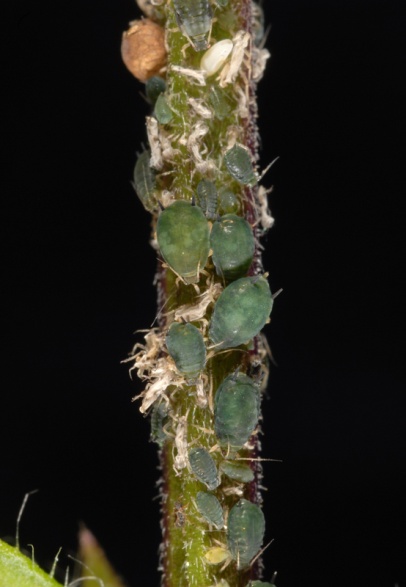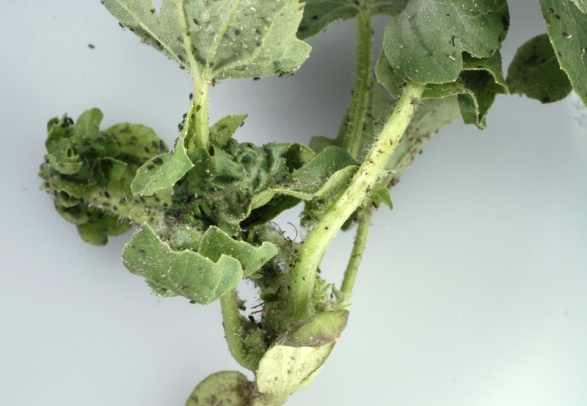
Melon aphid, or cotton aphid
Aphis gossypii Glover
(Insecta: Hemiptera: Aphididae)
Wingless females are 1 to 2 mm long and mottled green, or sometimes whitish or yellow. They have pale legs and antennae, black tarsi, and black, paired cornicles (abdominal appendages that secrete waxy fluid). Winged females occur in black-purplish and yellow morphs. Nymphs are covered in dusty wax and may be tan, gray, or green. Their head, thorax, and wing pads often are dark.
Mainly reproducing by viviparous parthenogenesis (nymphs are deposited by unmated females), melon aphid can complete its life cycle in as little as seven days. The sap-feeding nymphs and adults aggregate on the undersides of leaves or on growing tips of the vine or plant and secret copious amounts of honeydew, facilitating the growth of sooty mold.
Aphis gossypii is a cosmopolitan species throughout temperate and tropical regions. It is a common pest in the southeastern and southwestern United States and occasionally is damaging in other states.
Worldwide, about 700 plant species are reported as hosts of melon aphid. In Florida alone, this aphid feeds on over 60 host plants including cotton and curcubit vegetables such as cantaloupes, cucumbers and watermelon.
Images
To
save the Web-optimized images shown below to your hard drive:
PC users: right click to "Save Picture (or Image) As..."
Mac users: click and drag to your desktop.

Wingless, viviparous female of melon aphid, Aphis gossypii Glover, giving birth to a nymph
(Photographer: Lyle Buss, University of Florida)

Infestation of sea grape by melon aphid, Aphis gossypii Glover
(Photographer: Lyle Buss, University of Florida)

Watermelon damaged by melon aphid, Aphis gossypii Glover
(Photographer: Lyle Buss, University of Florida)